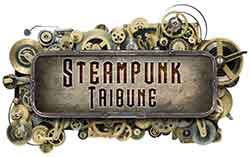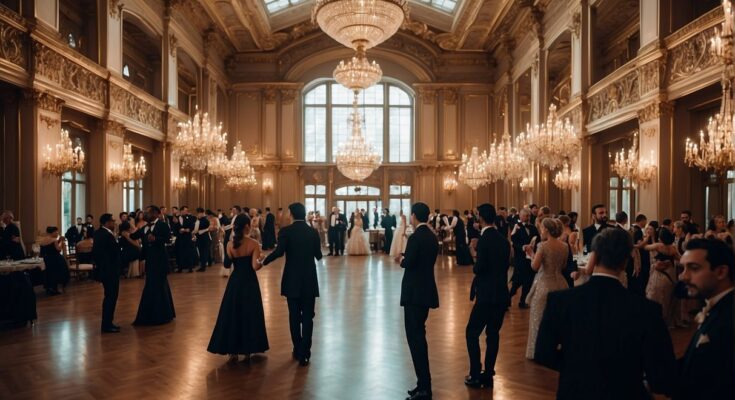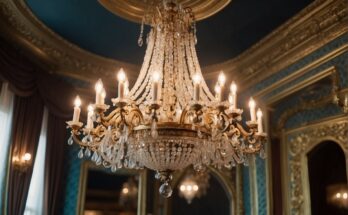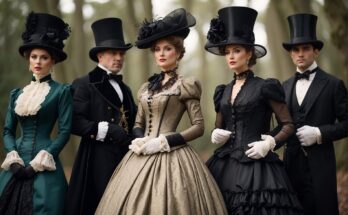The Victorian era, a significant period in British history from 1837 to 1901, marked by Queen Victoria’s reign, was a time of rapid change and immense progress. Art and culture flourished during this period, reflecting the complex societal transformations and the diverse sensibilities of the age. The emergence of the middle class, industrial advancements, and global interactions influenced the way art was created, consumed, and interpreted.

Victorian art is characteristically diverse, ranging from the Pre-Raphaelite Brotherhood’s romanticism to the sober realism of Victorian classicism. Artists like Dante Gabriel Rossetti, John Everett Millais, and William Morris sought to escape the constraints of industrial society by looking to medieval and early Renaissance art for inspiration, emphasizing nature, detail, and vivid color. Meanwhile, others such as Edwin Landseer and Thomas Creswick depicted the British landscape and the country’s growing urbanization, showcasing British pride and a sense of national identity.
Cultural pursuits in the Victorian period were not only confined to the visual arts. Literature, opera, and theater also experienced significant growth, with figures like Charles Dickens and Thomas Hardy capturing the societal shifts and moral dilemmas of the times within their works. The period saw the establishment of museums and galleries as public institutions, indicative of a broader democratization of culture. Victorian culture, hence, encapsulated an intriguing blend of tradition and progress, echoing the complexity of an era that has continued to captivate the interest of both scholars and the general public.
Historical Context of the Victorian Era
The Victorian Era was a period of significant change and development, characterized by Queen Victoria’s influence, rapid industrialization, and shifting societal norms that laid the foundation for the modern world.
Industrialisation and Society
The Industrial Revolution transformed the British landscape with railways and factories, reshaping the world of work and society at large. The working class swelled in numbers, toiling in challenging conditions, while the middle class flourished economically, gaining social and political power. Technological progress marked this era, typified by the Great Exhibition of 1851, a showcase of innovation and cultural prestige.
| Class | Characteristics |
|---|---|
| Upper Class | Wealth, power, influence |
| Middle Class | Rising economic power, improved social status |
| Working Class | Industrial laborers, often challenging conditions |
Advancements during this period not only revolutionized production and transportation but also had a profound impact on family, leisure, and societal values, emphasizing efficiency and progress.
The Influence of Queen Victoria
Queen Victoria’s reign, the longest in British history at the time, became emblematic of morality, family values, and propriety. Her role extended beyond the thrones; it was symbolic of an era where gender and class played significant roles in defining societal structure and personal identity. The Victorian era echoed the Queen’s conservative values, reinforcing the social stratification among the upper class, middle class, and working class.
The British Empire saw unprecedented expansion under Victoria, leading to an era often described as “Pax Britannica,” indicating a period of relative peace and global influence, although the realities of empire involved significant conflict and exploitation.
Victorian Era Timeline
- 1837: Victoria ascends to the throne, marking the official start of the Victorian Era.
- 1840s: Early years marred by economic depression, leading to social and political unrest.
- 1851: The Great Exhibition symbolizes the height of British industrial and imperial power.
- 1860s-1870s: High point for the British Empire, often termed as the mid-Victorian boom, characterized by political reform, including changes in parliament.
- Late 1800s: Spread of liberal ideas consequent to social and intellectual movements.
- 1901: The death of Queen Victoria, concluding the Victorian Era and heralding the Edwardian period.
This was also an age where politics increasingly involved the middle class, resulting in significant reforms including the extension of the franchise and changes to the functioning of parliament. Despite the overall societal progress, disparities remained widespread, with marked divisions between gender and class. The closing decades also saw beginnings of challenges to the established social order and values, setting the stage for the modern age that would follow.
Victorian Art Movement

The Victorian Art Movement is marked by its rich diversity, with multiple styles and subjects depicted by artists who sought both to preserve traditional techniques and to rebel against them.
Pre-Raphaelite Brotherhood
The Pre-Raphaelite Brotherhood was founded in 1848 as a challenge to the conventions of the Royal Academy of Arts. Rejecting the teachings of academy figurehead Sir Joshua Reynolds, they turned away from the mannered style of Raphael and the Italian Renaissance, valuing instead an intense attention to detail, vivid colors, and a return to the lush realism of pre-Raphaelite works. Key figures in this movement were John Everett Millais, Dante Gabriel Rossetti, and Edward Burne-Jones. Their works emphasized beauty and nature, often imbued with an almost spiritual luminosity.
- Notable Works:
- Millais: Ophelia (1851-52)
- Rossetti: Proserpine (1874)
- Burne-Jones: The Beguiling of Merlin (1874)
Aesthetic Movement
The Aesthetic Movement emerged in the late Victorian period, positioned as a pursuit of beauty for beauty’s sake, free from moralizing and narrative constraints. This distinctive style emphasized aesthetic values over social, moral, or political themes. Edward Burne-Jones, an artist who was also associated with the Pre-Raphaelite Brotherhood, transitioned into this movement, creating art that celebrated sensuality, beauty, and detail without overt messages or stories.
- Characteristics:
- Subjective Experience: Focus on personal emotional reactions to beauty.
- Visual Richness: Lavish decoration and color.
Realism in Victorian Art
The trend of Realism in Victorian art focused on the depiction of everyday life with an authentic, unidealized perspective. This movement was a response against the romanticized and dramatic themes prevalent in earlier Victorian paintings. Realist artists dedicated themselves to painting ordinary people doing ordinary things, drawing attention to the plights and triumphs of everyday existence rather than historical or mythological subjects.
- Realist Artists:
- Luke Fildes
- George Clausen
- Hubert von Herkomer
Realism revealed a more grounded view of Victorian society and offered a stark contrast to the ethereal quality of Pre-Raphaelite and Aesthetic works.
Cultural Advances and the Arts

The Victorian era marked a significant period of cultural advancement and proliferation in the arts, where literature, music, and architecture saw innovative movements that reflected the values and aspirations of the time.
Literature and Drama
Victorian literature expanded narrative forms and explored complex themes of social change and morality. Charles Dickens and Charlotte Brontë stood out with their vivid portrayals of Victorian society. Drama flourished with the enduring works of William Shakespeare, particularly Hamlet, which continued to be staged and studied in universities and colleges across the country.
- Key Literary Figures:
- Charles Dickens
- Charlotte Brontë
- Thomas Hardy
- Important Dramatic Works:
- William Shakespeare’s Hamlet
- Oscar Wilde’s The Importance of Being Earnest
Music and Performance
Music and performance in the Victorian era were family-oriented, with salons and musical gatherings often held in the family home. Influential composers like Sir Arthur Sullivan diversified music with operettas that entertained audiences throughout the south and in rural countryside. Public concerts became more accessible, reinforcing music as a staple of Victorian culture.
- Notable Composers:
- Sir Arthur Sullivan
- Johannes Brahms
- Performance Venues:
- The Royal Albert Hall
- The London Palladium
Victorian Architecture
Architecture during the Victorian period saw the Gothic Revival, a movement that harked back to medieval styles and spiritual grandeur. The era’s distinctive buildings merged functionality with a sense of dramatic embellishment. This is evident in both public buildings like the Houses of Parliament and private estates sprawling across the countryside.
- Architectural Styles:
- Gothic Revival
- Queen Anne Style
- Iconic Structures:
- The Houses of Parliament
- The Royal Courts of Justice
The cultural landscape of the Victorian era was shaped by a reverence for tradition coupled with the celebration of progress and innovation. Each of these art forms left an indelible mark on the fabric of Victorian society.
Victorian Era Society and Values
Victorian society was a complex hierarchy marked by strict social conduct and rigid gender roles. Art and culture during this period both reflected and influenced the prevailing values and the structure of society, where morality was paramount and the family was the core unit.
The Role of the Family
The Victorian family was central to the era’s value system, with family life often idealized as a haven in a heartless world. The middle class in particular emphasized the importance of a stable family, which became a key indicator of social status. Within the family, morality was enforced through strict codes of conduct, with British art frequently portraying these idealized domestic scenes.
Class and Social Hierarchy
Victorian society was rigidly divided into social classes: nobility, upper class, middle class, and working class. Social mobility was limited, and each class had its own roles and expectations. High society, which included nobility and the upper class, often engaged with the Liberal Party, advocating for reform and philanthropy, while also influencing the arts.
- Nobility and Monarchy: Played ceremonial roles and were patrons of the arts.
- Upper Class: Included wealthy businessmen who often collected art.
- Middle Class: Professionals and entrepreneurs, the backbone of civil society.
- Working Class: The labor force, less engaged in cultural pursuits due to economic constraints.
Gender Roles and Feminism
Male dominance was pervasive in Victorian society, with most renowned artists being male artists. Women were typically consigned to the private sphere of the home, and female artists often struggled for recognition. Despite these restrictions, the latter half of the Victorian era witnessed the rise of feminist movements, which began to challenge traditional gender roles and advocated for women’s rights, including in the arts.
- Male Artists: Enjoyed public careers and were celebrated.
- Female Artists: Worked under significant constraints and received limited acknowledgment.
This era laid the groundwork for the social changes that were to define the early 20th century, with the arts playing a crucial role in both reflecting and challenging the society’s values.
Science, Technology, and Progress
The Victorian era was marked by remarkable advancements in science and technology, which fueled industrialization and cultural transformation. Progress became a watchword as they built a modern world.
Industrial Revolution
The Industrial Revolution it its zenith during this period, bringing profound changes to British society. Railways expanded rapidly, shrinking distances and spurring economic growth. The proliferation of steam-powered machinery catapulted manufacturing, mining, and transportation industries into a new era of production and efficiency. This societal overhaul triggered an economic depression for some sectors, as the market dynamics shifted.
- Railways: Key to industrial and cultural change, they connected cities, facilitating quicker movement of goods and people.
- Manufacturing: Factories burgeoned, altering workforce dynamics and urbanization.
Scientific Discoveries
Victorian scientists made groundbreaking discoveries that fundamentally altered humanity’s understanding of nature and the universe. Charles Darwin‘s publication of “On the Origin of Species” in 1859 revolutionized biology and the conception of human life’s origins.
- Biology: Darwin’s theory of natural selection challenged traditional beliefs.
- Medicine: Advancements in medical science improved public health and sanitation.
Technological Innovations
Technological innovations during the Victorian age were prolific, influencing culture and daily life. Advances in engineering led to the iconic structures such as the Clifton Suspension Bridge and the Crystal Palace.
- Communication: The electric telegraph enabled near-instant communication, transforming journalism and information dissemination.
- Engineering: Achievements included the SS Great Eastern and widespread use of gas lighting.
Victorian Art and Its Global Impact
Victorian art, originating during Queen Victoria’s reign, not only reflected Britain’s own cultural dynamics but also made a significant imprint on the global art scene, with particular impact on colonial regions and interaction with European art movements.
British Art Beyond the Borders
The United Kingdom’s powerful military and economic status under Queen Victoria facilitated the spread of British art across the world. Museums such as Tate Britain today exhibit works that were once part of this global dialogue. Notably, British art made its way to the far reaches of the British Empire, with countries like India experiencing a cultural exchange articulated through art.
- Key Institutions & Exchanges
- Museums: Tate Britain et al.
- Notable Exports: Paintings, Sculptures
- Target Regions: India, Africa, Australia
Colonial Influences
The British Empire’s expansion brought not only British art to its colonies but also drew in diverse influences from these regions. In many cases, elements from Indian, African, and Oceanic cultures were incorporated into Victorian art, creating a distinct blend of styles that was later displayed in the United Kingdom and beyond.
- Influential Regions
- India: Ornamentation, Textiles
- Africa: Sculptural Forms
- Oceania: Motifs and Patterns
Examples of Cross-Cultural Artworks
- Paintings infused with Indian motifs
- Sculptures adopting African aesthetics
Crossovers with European Movements
Victorian art extended its influence across Europe, intersecting significantly with the burgeoning modernist movement. The aftermath of events such as the Franco-Prussian War saw an influx of Paris-based French impressionist artists to the United Kingdom, leading to a rich cultural exchange within the European tradition.
- European Artistic Exchange
- France: French Impressionists, Paris-based artists
- Reacting to Modernity: Progressive movements
- Shared Struggles: Post Franco-Prussian War influences
With these cultural intersections, Victorian art played a pivotal role in shaping art history, reflecting the power dynamics of its time and contributing to the rich tapestry of global artistic heritage.
Key Figures in Victorian Art
The Victorian era embraced a wealth of artistic talent that shaped not only English art but also had a lasting impact on the global art scene. Among the prominent figures of this period, John Everett Millais stands out. He was a founding member of the Pre-Raphaelite Brotherhood, a group seeking to reform art by rejecting what it considered the mechanistic approach that had come to dominate European art. His notable works include Ophelia and Christ in the House of His Parents.
Another key artist, Dante Gabriel Rossetti, was also a founding member of the Pre-Raphaelite Brotherhood. He brought a sensuous and almost mystical quality to his paintings and poetry. Rossetti’s works, including The Blessed Damozel and Proserpine, are characterized by their intensity and intricate symbolism.
Edward Burne-Jones followed in the footsteps of the Pre-Raphaelites, blending romanticism with the medievalism of the Gothic Revival. His creations like The Beguiling of Merlin and The Golden Stairs are emblematic of his contribution to Victorian art, suffused with mythological and dream-like elements.
J. M. W. Turner was another leading artist of the Victorian era, though his career began earlier. Celebrated as a Romantic painter, he was famous for his exquisite landscapes and maritime scenes, which include Rain, Steam and Speed – The Great Western Railway and The Fighting Temeraire. Turner’s use of light, color, and atmospheric effects was groundbreaking and paved the way for Impressionism.
These individuals were titans in the Victorian art world, each with a distinctive style that engaged audiences then and continues to resonate today.
| Artist | Notable Works | Contribution |
|---|---|---|
| John Everett Millais | Ophelia, Christ in the House of His Parents | Pre-Raphaelite Brotherhood founder |
| Dante Gabriel Rossetti | The Blessed Damozel, Proserpine | Pre-Raphaelite Brotherhood founder, Poet |
| Edward Burne-Jones | The Beguiling of Merlin, The Golden Stairs | Romantic and Gothic influences |
| J. M. W. Turner | Rain, Steam and Speed, The Fighting Temeraire | Pioneered atmospheric effects |
Reflecting on Victorian Art and Culture Today
Victorian art and culture have carved an indelible mark on modern aesthetics and art history, resonating in today’s museums and galleries, inspiring contemporary work, and shaping the artistic narrative of succeeding eras.
Victorian Art in Modern Museums and Galleries
Modern institutions, such as Tate Britain, have dedicated significant space to Victorian art, preserving a culture-rich tableau for everyone. These collections range from the essence of Romanticism to early hints of Impressionism. Visitors to these museums encounter meticulously curated pieces that embody the era’s complex aesthetic and social values.
Contemporary Interpretations
Contemporary artists often draw on Victorian symbolism and themes, reinterpreting them with a modern lens. Such works juxtapose the past with present-day ideologies, inviting viewers to consider the evolution of cultural narratives. Victorian themes are explored in various forms, including digital art, installations, and performance, reflecting the period’s enduring relevance.
Artistic Legacy and Influence
The legacy of Victorian art is evident in the progression towards the Modernist movement. It provided a bridge from the emotive storytelling of Romanticism to the fragmented perspectives of Modernism. The period’s fascination with nature, emotion, and the human experience continues to influence artists today, underscoring the intertwined nature of culture and artistic expression.
Conclusion
The Victorian era marks a significant epoch in the tapestry of world history, particularly in the realms of art and culture. The period witnessed an intertwining of morality and society with a definitive bent towards progress. The art of this time was a mirror to the transformative currents present in Victorian society, reflecting both the elegance and the anxieties of the age.
Artists of the era were prolific in their output, creating works that ranged from the grandiose historical paintings to the intimate genre scenes. These pieces did not exist in a vacuum; they were part and parcel of a broader cultural dialogue. Literature, performance, and decorative arts flourished alongside, each influenced by the prevailing Victorian values and in turn, shaping society’s outlook.
Culture in the Victorian era was not static. It evolved with the dawn of industrialization and the rise of the middle class. The era’s art and culture, thus, can be seen as the forerunners of modernity, laying the groundwork for future artistic and cultural developments.
The period’s legacy persists not just in galleries or history books, but in the continuous influence it exerts on contemporary aesthetics and social norms. The depth of Victorian culture, embodied in its art, continues to be a subject of fascination and study, attesting to the period’s enduring significance in the narrative of human progress.




